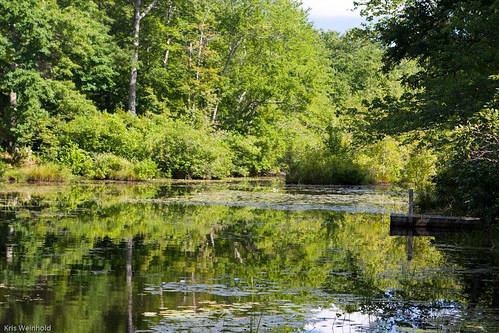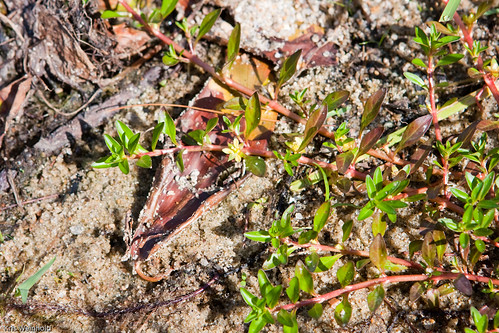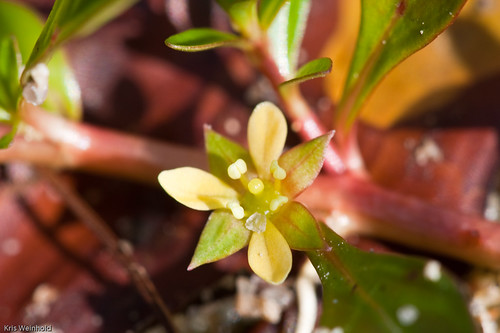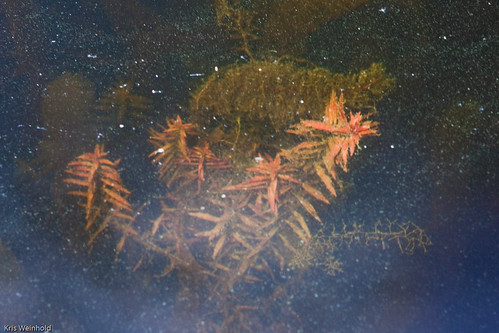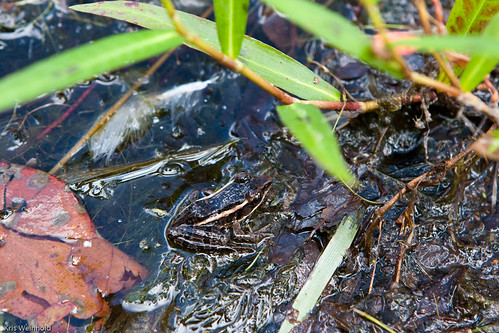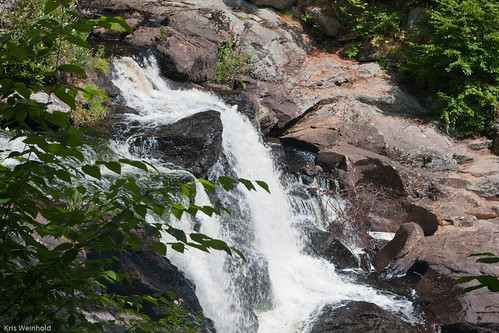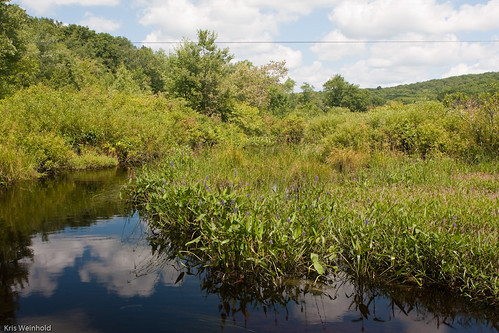Connecticut Trip
August 18th, 2009Last weekend, I was in the Connecticut area with a couple of friends, so we took the opportunity to check out a few of the local bodies of water in the area. Our first stop was actually not in Connecticut, but nearby in Rhode Island at Worden Pond. Worden Pond is a large pond with lots of campgrounds and houses surrounding it. There was a lot of marsh and floating debris, creating rather tannin colored water.
In with the rushes were quite a few large Sagittaria plants in flower. The flowers are an attractive white with yellow in the center, resting on a long stalk that protrudes from the water itself. A campground was kind enough to allow us to use their beach to take some pictures while we drove through.
One of our other stops was Roger’s Lake in Old Lyme Connecticut. This is the town from which Lyme’s Disease is named, but fortunately, I didn’t encounter a single tick on this trip. We stopped at one of the public boat ramps to see what types of vegetation were present. It’s a very pretty lake with lilies growing in several places. It looks like the wonderful place to kayak for the day.
One of the interesting plants growing in this lake is an isolated population of Ludwigia x lacustris. This particular Ludwigia is a natural hybrid between Ludwigia palustris and Ludwigia brevipes. Below is a picture of the emersed form growing on the bank.
One of the ways to differentiate it between regular Ludwigia palustris and the hybrid, is that the hybrid’s flower contains petals, while L. palustris‘ flower does not. The flower is very typical looking compared to other Ludwigia species that I’ve seen.
Submersed, Ludwigia x lacustris is a wonderful plant. I’ve kept some in my aquariums for a little while prior to this trip. Below is a picture of the submersed form in the lake. As you can see, the leaves are long and narrow like L. brevipes, but not quite as narrow, and exhibit a nice reddish orange color like L. palustris. It’s not too dissimilar from Ludwigia repens x arcuata, but it’s growing pattern is more upright, whereas, L. repens x arcuata grows more at a 45 degree angle.
Of course, we weren’t there to just look at plants. We enjoyed seeing several species of waterfowl, and of course, several frogs and turtles were present. Looking at the picture below, I imagine that there were quite a few more frogs than we spotted due to their excellent ability to blend with their surroundings.
Another notable stop on our trip was Chapman Falls at Devil’s Hopyard State Park in East Haddam, CT. The falls are large series of cascading falls, which are only partially shown below. The full falls are probably 4-5 stories tall, and are quite impressive.
The top of the falls are just as beautiful, being lush with plant life. There was a huge expanse of some Polygonum species growing up out of the water, as well as, some Schoenoplectus subterminalis bulrush flowing in the strong current.
All in all, it was wonderful to be able to experience a few of Connecticut’s wonderful nature areas while traveling through the state. I would really like to get back up there to do some more hiking than I was able to do on this trip. I highly recommend checking out these parks to anyone in the area.


